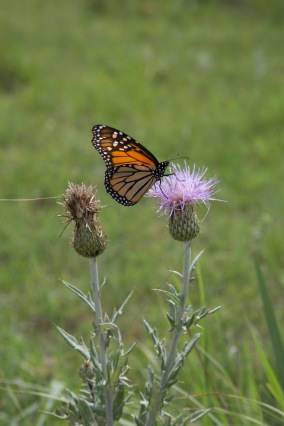 Y’all. I have been planning this blog post for weeks now. And maybe its because I’m new to blogging, but this issue is changing so fast that every time I sat down to write this post, I wanted to make sure I had all the information I could so I could pass it along to my followers. But I’m learning more every day, and so at some point you just have to pull the trigger and write the post.
Y’all. I have been planning this blog post for weeks now. And maybe its because I’m new to blogging, but this issue is changing so fast that every time I sat down to write this post, I wanted to make sure I had all the information I could so I could pass it along to my followers. But I’m learning more every day, and so at some point you just have to pull the trigger and write the post.
I’ve been attending meetings about the monarch butterfly for 9 months now, and sometimes it baffles my mind that I’m spending so much of my time focusing on one species of butterfly. Yes, we have been hearing a lot about pollinators in recent years, mostly native and managed honeybees, and we are all aware that population changes are occurring and people are starting to try to better understand why (hint: its complicated).
The monarch butterfly is a different issue in that it involves the US Fish & Wildlife Service (USFWS) and the Endangered Species Act (Act). The USFWS is considering listing the monarch butterfly as a threatened or endangered species under the Act. The agency was petitioned and failed to meet their statutory obligations under the Act so was sued and settled with the plaintiffs. They must now make their decision about listing the monarch by June 2019. That process is actually the easy part to understand, in my opinion.
June of 2019 is two years away, but a lot will happen in the meantime. There is an opportunity here – for Illinois agriculture and other stakeholders who would be impacted by a listing – to convince the USFWS that a listing is not necessary. This is where it gets hairy. The USFWS will go through a process of evaluating many things over the next two years: the current status of the monarch butterfly population and the status of its habitat, current conservation efforts on the ground, planned conservation efforts, and the science behind all of it. How we accomplish providing that information is messy and confusing. There will be a “Mid-Continental Monarch Conservation Strategy”, written by the Midwest Association of Fish and Wildlife Agencies (MAFWA), which is a collection of state wildlife agencies (in Illinois that would be our Department of Natural Resources). There will be a Species Status Assessment (SSA), written by the USFWS. There will also be a Conservation Efforts Database (CED) that is created by the USFWS and populated by stakeholders. A similar database was used when the USFWS was considering listing the sage grouse out west (it did not get listed). In addition to those, individual states (IA, MO, TX) within the monarch flyway are crafting their own monarch conservation plans that they hope will serve to provide assurances if the monarch does in fact get listed.
These efforts are overlapping and will happen over the next two years. The first draft of the Mid-Continental Monarch Conservation Strategy will be done in 5 months! So things are happening fast.
My job is to be at the table during these discussions and make sure that our farmer members are represented. I’ve outline three goals for myself:
- My first goal is to convince the USFWS that listing the monarch is not necessary. To do that, I will make sure that they understand the impressive conservation efforts taken by Illinois farmers. We have the second highest number of acres in the country for the Conservation Reserve Program Pollinator Habitat program. There are more than 87,000 acres of private lands that have been taken out of production to provide habitat for pollinators. And that is just one program. In order to convince the USFWS, we have to understand the process they have laid out, and write really convincing conservation plans.
- My second goal is to make sure that any targets set in these conservation plans, for habitat acres (or milkweed stems!), are reasonable and feasible for our members.
- My third goal is to put Illinois farmers in the best position, should the monarch get listed. I will actively pursue assurances for our farmer members so they can continue to grow food and fiber without fear of repercussions. I acknowledge that much of this decision-making process is out of my control, but I can put us in the best position possible.
Stay tuned for more from me – next post will focus on what a listing might mean for Illinois farmers.